5 Cars Posting Gains in a Soft Market
It’s been an eventful three months, and another update to the Hagerty Price Guide has landed. The unofficial start to the auction season kicked off in January with Kissimmee and Scottsdale, and now that the driving season is upon us, market activity has picked up since the start of the year. While the market overall remains nuanced, there were some clear standouts that gained notable value in the past few months and offered some lessons for where the hobby currently stands.(Read more to learn about the methodology behind the Hagerty Price Guide.)
1953–58 Studebaker Commander Station Wagon: +44%
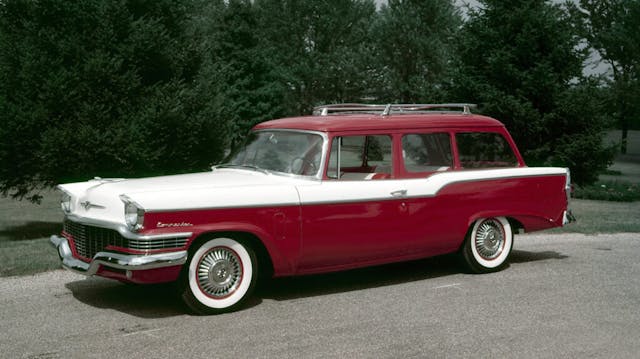
With its 1953 redesign, Studebaker’s Commander was the carmaker’s top-of-the-line model. Compared to the previous series, the Commander was significantly upgraded, with a stunning and more aerodynamic-looking design. Although the appearance was radical next to Studebaker’s larger competitors, the car’s success would be hampered by poor marketing and the company’s assumption that buyers vastly preferred four-door models; tooling up production to meet that perceived demand would prove a misstep for Studebaker (one of many the brand would make in the postwar period leading to its demise). Unable to meet demand for two-door models, early quality control issues, and an inability to compete with the cheap prices offered by the big three, Studebaker struggled with its customer base.
Since shuttering its doors in 1964, Studebaker has been overlooked by the broad pool of enthusiasts, left to a die-hard group of marque fans to keep the flame alive. The good news today is that their tenacity has paid off. There is very good parts support for a car that is far less common than its contemporaries, and there are more options for buyers who now find station wagons far cooler than they once might have.
A handful of Commander wagons popped up over the past few months, bringing strong and consistent values, above where the market has been historically. Not to worry, though, as these are still somewhat affordable buys; despite a 44 percent increase, a pristine Commander wagon can be had for under $40,000, and a driver-condition example in the $20,000 range. Is this a resurgence of the 1950s independent automakers among enthusiasts? Likely not. However, it does show the strong love for station wagons of all eras and marques—even the ones many of us forgot about.
1985–86 Audi Sport Quattro: +30%
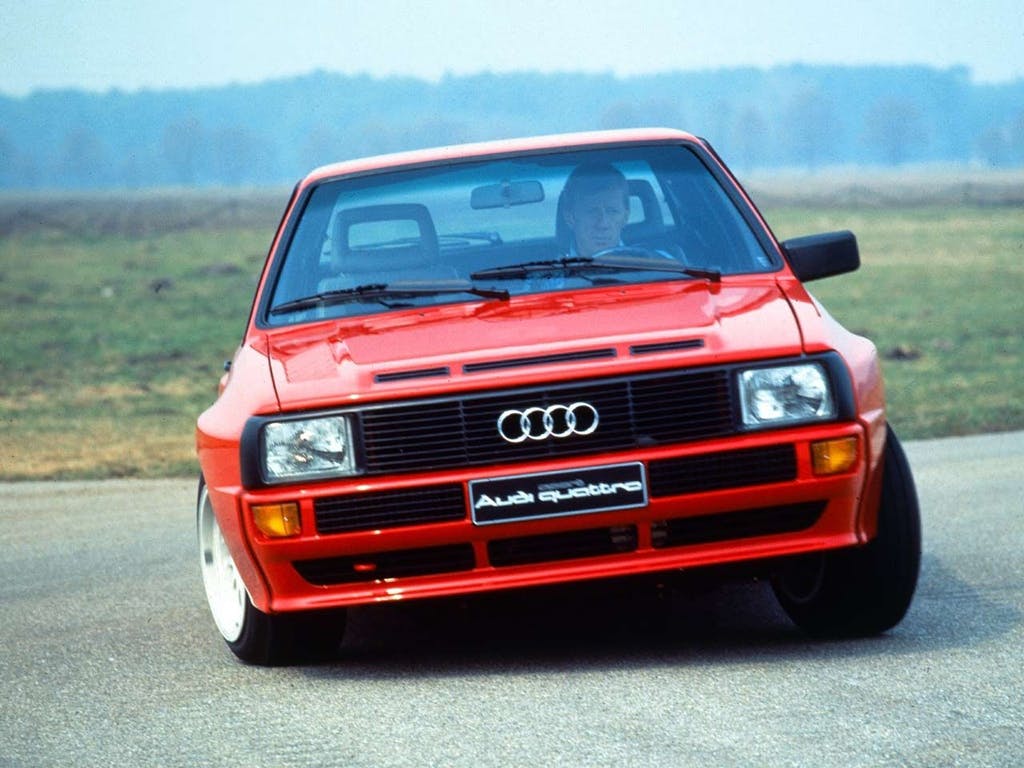
At the peak of Group B’s reign as the most unhinged class of racing, Audi led the way. The Quattro’s all-wheel-drive system changed the game completely, its prodigious grip necessary to put down all the power the turbocharged cars were producing. It would set the standard for rally racing moving forward.
The Sport Quattro was the second iteration of Audi’s dominant Group B racer, and it was shortened and lightened compared to the Ur-Quattro in order to better attack the tight, challenging roads of rally racing. Of course, as with many motorsports series, the FIA required a certain amount of road-legal examples to be produced in order to homologate the model for racing, and the road-going Sport Quattros kept Audi within the rules. With just 214 examples made, they were hyper-exclusive right out of the gate. Add in the fact that they share DNA with the insane rally cars, and you have a car that is highly sought after.
There are many reasons why the Sport Quattro has seen such a big jump in the past few months. These were already expensive cars; a pristine example could run in the neighborhood of $500,000, but that number’s increased yet again. With each passing year, the legend of Group B continues to grow, and it attracts new audiences—and new buyers. As the apex predator of the era, demand for these Audis is on the rise. There is also the fact that we haven’t seen one of these cars hit the market in quite some time, and while a car offered by RM Sotheby’s in January wasn’t a concours-quality example, it blew past the expected price of a concours car. One sale doesn’t constitute a trend; however, when dealing with a pool of just 214 cars, we have to take market examples when they come and make some educated leaps as to where the data are pointing. Right now, the data point upwards. Group B race cars have already sold for seven figures, so the direction their street-going counterparts are taking was only a matter of time.
1984–89 Subaru XT: +25%
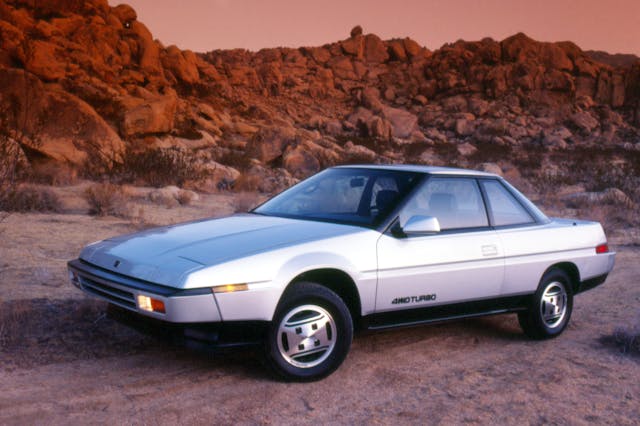
Nowadays, the term “sporty Subaru” is synonomous with the Impreza-based WRX and STI. For good reason, too, as Subaru was a force to be reckoned with on the World Rally Championship (WRC) circuit, and the WRX/STI were the closest mere mortals could come to being Colin McRae. But they weren’t Subaru’s first shots at making a sporty car to attract more buyers to the brand. We had the funky and exceptionally rad SVX, and before that, there was the XT.
Now, the XT name might be familiar to some as the sporty version of the Forester, but for a short time, it was actually a car model—a wedge-shaped and weird-looking one at that. It was the ’80s, after all, and anything sporty needed to look like a door stop, apparently. Subaru sure did nail everything about the 1980s with this car. Unfortunately, the Japanese giant managed to sell just under 100,000 of these things, and before long it would be relegated to memory. There are a number of enthusiasts flying the XT flag, however, and recent sales above price guide–appropriate values have driven values jumped a few grand. Despite that, you can still pick up an AWD, turbocharged XT in the neighborhood of $20,000. Will the XT follow the Brat as the latest old Subaru to gain traction in the collector world? Time will tell—they could be simply too wacky and uncommon to gain long-term traction.
1973–77 Chevrolet Monte Carlo: +24%
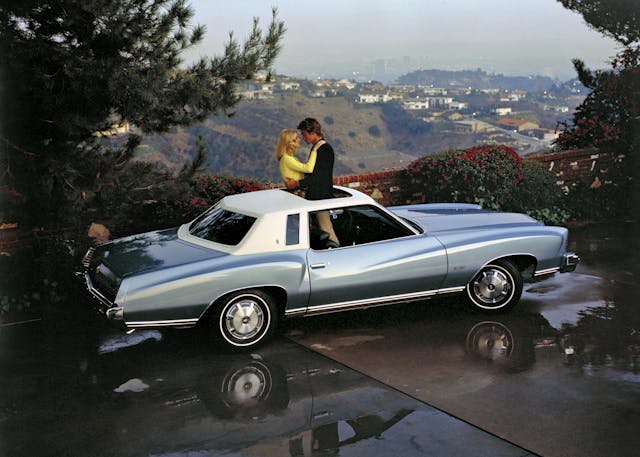
With the launch of the G-body platform, General Motors effectively cornered the personal luxury market when the redesigned Pontiac Grand Prix and all-new Chevrolet Monte Carlo arrived for 1970. Like it or not, these cars would set the standard for mid-size, sporty cars throughout the ’70s. The A-Body based 1973 Monte Carlo would come out of the gate strong, selling more than a quarter-million cars (over 50 percent of the total first-generation production), and sales numbers would increase from there.
Mid-’70s American cars are a bit like the late, great Rodney Dangerfield: Large, brash, and they just “don’t get no respect.” They’re hobbled by abysmal horsepower ratings, poor gearing, and awful parts support from the aftermarket. But despite all that, they have a certain charm to them. Nostalgia is a strong motivator, and it has a strong influence on what we’re willing to spend our hard-earned money on. While we can’t get in the head of every buyer, it is clear that with a number of strong sales the past quarter, the mid-’70s Monte is receiving some of the appreciation in the collector market that it’s been missing for far too long.
1964–70 Honda S600/S800: +21%
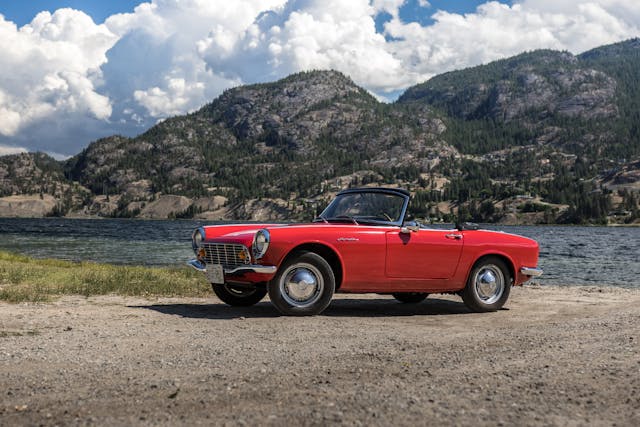
We may not think of it now, but Honda started life as a motorcycle company. That its first car, the S500, was a tiny, sporty roadster seems in hindsight a logical way to step into the world of four-wheeled transportation. These cars and the siblings that followed would solidify Honda as not just a car builder, but also as an engine builder. The tiny engines, (606cc in the S600 and 791cc in the S800) would make decent power for their size, but in Honda fashion they’re best known for their insane redlines (9500 rpm in the S600) and fantastic engineering. Turn the clock ahead three decades after the last S800 left the factory and Honda gave us a worthy successor in the incredible S2000.
Classic Japanese cars occupy a weird space—a few from the 1960s and ’70s, like the Toyota 2000GT and the Datsun 240Z, sit at the front of our consciousness. Others, like the Honda S600/800, have been criminally overlooked. Sure, they may be tiny for American consumers, but they carry everything that makes a sporty Honda so great, and were foundational in establishing how we think of Japanese enthusiast cars. People are taking notice lately, however, judging by the recent sales of two very good examples (one crested into six-figures). While this doesn’t mean that every S600 or S800 is a six-figure car now, it does demonstrate swift-growing interest, and that the S600/S800 are cars to watch.
***
Check out the Hagerty Media homepage so you don’t miss a single story, or better yet, bookmark it. To get our best stories delivered right to your inbox, subscribe to our newsletters.


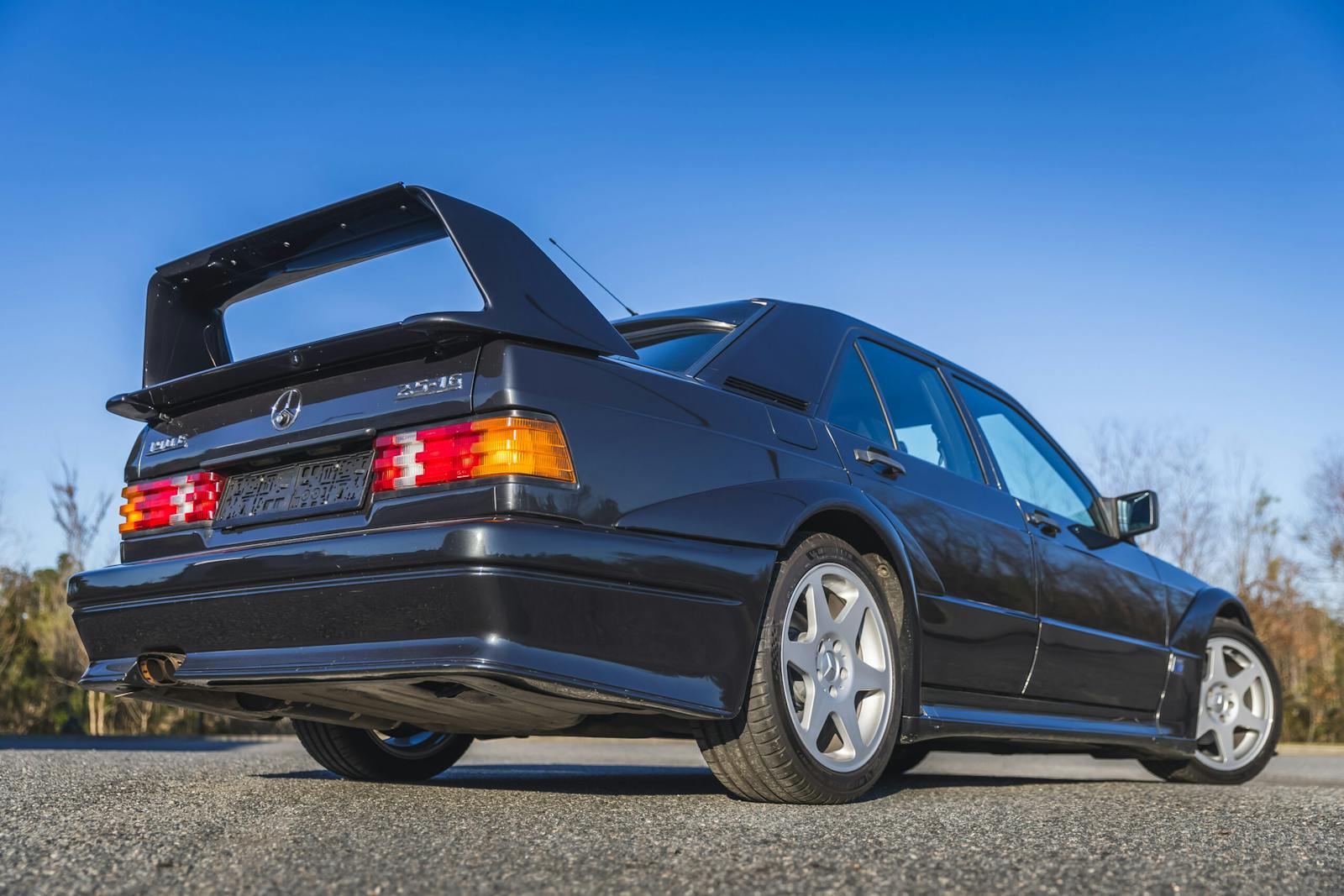
These are not really much for info or how to relate it to the real market. We get a percentage but we get little to qualify this. How many sales was this based on? What condition was the car or cars. Where were the sales. How were they optioned?
These are pointless numbers unless they are related to relevant info.
Fair points, IMO.
Couldn’t agree more. Must be hard up for things to write about…total waste of time!
Don’t read it.
How would anyone know that the article was poorly written and lacking of credible information without first reading it? Not very bright are ya?
Fighting right out of the gate about a hobby we all love. This is the world we live in.
Some people just cannot be nice.
Aside from the Monte Carlo, which I would give a firm maybe, the rest of this group are refugees from the local animal shelter. Major woofers. Hopefully I will never be caught dead in any of them.
Why do you guys always feature things like Bugatti’s and AMC Hornets? Who can afford the first and who really cares about the second? The Studebaker station wagon? Really?
You guys are being a tad harsh. Not everyone owns or is into the cars we see all the time such as Mustang’s & Camaro’s. I don’t recall seeing the Subaru XT before & find it interesting.
A fellow Xerox employee had a Subaru XT. It reminds me of my current 1984 Fiero SE. They came out at the same time.
Yet you are here every day.
Sorry should be “he is” not “you are”. The bloviation is tiresome.
I’m right with you with your opinion…. Because opinions matter, I wouldn’t be caught driving around in anyone of those garbage cans on wheels.
Yes Studebaker It’s our turn in the rodeo
Always had/have a soft spot for Studebaker having owned a 1953 coupe as my first car at 16. That said, When I see the articles of cars I don’t listen to any opinions I enjoy seeing the oddball ugly ducklings that were just transportation and it brings a smile to see them again. The pricing will always be what a person is willing to pay for a memory. None of the cars you listed will ever be worth what collectors want for there collection, there just cars.
I own a 1930 Studebaker Dictator 2 door sedan. Very rare body style now. Because it came out during the Depression parts are hard to find.
Agreed Charles
I also had a 1953 Studebaker. It was a commander coupe. I loved that car and the incredible dash switches and over drive. I wired the over drive solenoid to the Hurst floor shifter I installed and had six forward gears. It was a lot of fun. I was about sixteen as well.
100% agree
My ’54 Wagon always draws a crowd at cruises. They are cool, rare and fun.
Thumbs up for sure. How can these awful dogs even be considered classic?
Great points!!!
I’d love to have the Studebaker wagon.
I agree. I’d drive the Stude wagon in a heart-beat! When I looked at the Stude picture, my first reaction was ‘what a lovely machine’! I currently drive a ’66 Meteor Montcalm S/33 and I’d like to have a ’66 Meteor Montcalm wagon but I’d settle for the Stude. Absolutely.
Need to tell a good friend to STOP using his parts cars for the stock car ! We race a ’75 Monte & have 3 whole spare cars (w/titles)
All 3 are restorable !
One of these days my gen 1 Miata’s and my 73 Malibu are gonna find some love.
Thanks for the feedback, hyperv6. We appreciate attentive eyes and will incorporate more detailed market lessons, where applicable, in future Price Guide stories.
Regarding number of transactions and how that impacts valuation, I’d steer you to the primer linked at the beginning of this article on how the Price Guide is made for a more complete synopsis: https://www.hagerty.com/media/market-trends/hagerty-insider/how-the-hagerty-price-guide-is-made/
I thought hagerty knew cars? The segment on the monte carlo, mentioned it as a g- body. G- Body name actually became the name for GM midsize cars in 1979. 1978 G-Body cars we’re still called a body cars by the marketing department. All 1973-1977 monte carlo’s are 2nd gen A-Body cars built on the 4 door chassis of Malibu’s,.
Hi Robert, the G-Body was indeed a legitimate designation from 69-72 in the Monte Carlo and Grand Prix (former 69 GP owner myself), based on the 4-door A-Body chassis. The G-Body nomenclature did indeed take a hiatus and come back when the Metric chassis was introduced, but was never exclusive to that chassis. But you are indeed correct that per GM, the 73-77 is an A-Body. The post has been edited for clarity to make that distinction more obvious.
Metric G-bodies got that distinction when the A-body front drive dumpster fires arrived.
Working at Fisher Body in the early 70s, I would add that we used the term A-special for the Monte Carlo, Grand Prix, Cutlass Supreme and Regal formal coupes beginning 1973. Most of the 4-inch increase in wheelbase of the Grand Prix and Monte Carlo over A coupes pre-1973 was added forward of the cowl, earning the G label, not used for the Cutlass Supreme on the 112″ WB. Would have to check if interior dimensions grew post-1972 over std coupes. Similarly, we used H-special for the Monza, Sunbird, Starfire, and Skyhawk based on H “Vega” underpinnings.
Actually, Grand Prix had slightly LESS rear legroom vs. LeMans coupe in ’69-73. A-body 4-drs made use of extra wb in rear legroom. Maybe enough inner body parts were different to warrant a G code or maybe Pontiac insisted to offer big engine and price. Now I’m not sure about ’70-72 Monte Carlo. Body parts seem very similar to A-bodies.
thanks for clearing that up. i was scratching my head knowing tha my 86 el camino is based on ‘g’ body.
Gee Robert – You get an A in automotive today! Just proves that “all” of us is smarter than “one” of us.
pointless and LOW. I just got the “old cars ” edition with a price list on the cars rated from in classes 1 through 6 (6 is a parts car). Show me where I can buy a 1968 Dodge Charger 383 car in number 2 condition for 35K.
I’ll jump right on it! It seems everytime I look at anything it is close to 100K or more and that is NOT for a number 1 car either! I have NO IDEA where you guys get these prices.
Hi Bob, could you clarify, are you offering feedback for Hagerty or for Old Cars? Those are two different companies and we (Hagerty) only publish valuations online. I did verify and we do not recommend a #2 value for a 1968 Charger (or any second generation Charger) with a 383 at $35,000, I agree, that is too low. That said, we published a piece last summer about how we analyze the data and assemble our guide. Hope this answers any questions on how Hagerty does it, unfortunately I am unfamiliar with the methodology of Old Cars and their guide.
https://www.hagerty.com/media/market-trends/hagerty-insider/how-the-hagerty-price-guide-is-made/
I agree.
I agree. These are all esoteric cars that make up such a minuscule segment of the market that they are really irrelevant. With the wealth of information available: Hagerty should make an effort to define market trends based on relevant information not anecdotal commentary on a tiny group of cars that are totally insignificant. This is not entertaining it is annoying.
Hi JJ, thanks for the feedback. Really, the point of these articles is to point out movement within the market and to try to discern lessons where we can. Sometimes the big movers are well-known models, sometimes they’re not and we’re merely shining light on cars that just don’t receive the attention they should. We’re certainly not picking based on favorite cars (if I was, all top 5 would be all 90s Japanese sports cars). Since you mention that you would like more on broad market trends, I recommend this piece about our market indexes that just published. That may be more along the lines of what you’re requesting.
https://www.hagerty.com/media/market-trends/hagerty-insider/hagerty-price-guide-indexes-show-a-market-searching-for-equilibrium/
When I read this line, “we’re merely shining light on cars that just don’t receive the attention they should.” I think that might be the problem as to why this article is receiving much flak. Who decides should?
As in who decides should be mentioned? In that case it is the author (yours truly), some of these cars still posted much bigger gains than the mainstream. I get it, some vehicles aren’t as interesting to most as others, but I’ve noticed that even if we’re mentioning cars that most people like, there are still those who will chime in and mention how their car wasn’t mentioned or they don’t like the selection. This is still based on data and the cars on the list still outperformed the majority of the market and that is the bottom line for the basis of the picks.
You sound defensive.
No need to be defensive.
Take the feedback, or don’t.
Not the intent here. There seems to be a lot of opinion about the picks, merely trying to set the record straight on the methodology and past experience. Trust me, I’ve been called a lot worse in other articles… Have grown thick skin over the years.
Every single car is making big gains in this or any economy. I could have bought that Studebaker or any of those cars for that matter for a quarter or what they are asking today. A cup of coffee was 25 cents once. I don’t think we are talking of investment queens, just cars.
Get off my lawn! This ball is mine now!
I agree. Also, how many Studey wagons were built in the first place? I’ve never seen one and I’m 67. Good luck finding one worth restoring. The problem with the Monte’s (or anything from the mid-seventies) is complying with emissions laws. Most people took off the A.I.R. pump and threw it away, but it’s still required in many states. You could install fuel injection, or a newer engine, but emission regs vary wildly across the U.S. Many of these cars were abandoned years ago, not to mention the ones destroyed by the Cash fo Clunkers programs.
I think the reason you don’t /did’nt see cars of that make and time is that they became throw away cars in their day. My farther would come home with a 38 Buick one day the next month a Kaiser, the next a 48 Plymouth and so on. When they stopped running and didn’t pay to repair off to the junk yard and put the $10 on the next car. It was different back then.
1990 – 1992 Cadillac Metropolitan Brougham Funeral Flower Car + 19% ( estimated )
A head-turning stunner at any event, but you know, always in demand for biker funerals.
In a very real sense, the cowboyest Cowboy Cadillac of all.
I remember when Chevrolet introduced the 73 Monte Carlo with it’s refreshing restyle. What an improvement over the previous one (my opinion). The swivel driver’s seat to make entering and exiting easier was a great feature.
This is why horse racing remains popular. In my opinion the 1970 Monte Carlo was one of GM’s cleanest designs of that period, along with the 1969 Camaro and Chevelle/El Camino.
I also liked the 68-72 Chevelle and El Camino. What I didn’t care for on the 70-72 Monte Carlo was the bulge over the wheels. The second generation Monte Carlo also had bulges but, in my opinion, more stylish.
That and it didn’t hurt that you could get it with a 454.
I bought a pristine ’73 in ’77. Light yellow with a tan vinyl top. It was a Monte Carlo “S” so it had the full vinyl top instead of the half-which I never cared for. 350, 4 barrel, dual exhaust, and 15×7 Rally Wheels. A very enjoyable car to drive.
To me the Audi Sport Quattro is the most likely to remain strong. World wide enthusiasm for this rally bred car.
The Subaru XT, I haven’t seen one in forever, most have rusted away.
I thought the Subaru had split side windows?
SVX, not XT.
The 1977 Monte Carlo with t- tops and OJ is finally dead swivel bucket seats always had a small place in my heart
I do not think the market is that soft. Quality cars will most always get a quality price. Problem is that there is a lot of crap to sift through to find decent cars. The days of a tarred up underside being acceptable are long gone. Buyers are weighing the options of restoration costs now more than ever on cars that have needs.
I agree with this, the cars they featured here are actually kind of cool snd to see some of the changes of average pricing and some of the cars you don’t see a lot. However, a 73 Monte Carlo my dad bought brand new. A the time I was 12. By the time I turned 16 I drove it quite often and it was a very popular car then. And the girls loved it ha ha.🙂
I have restored and customized a number of cars. The cost, as with everything else, has significantly gone up. My opinion, the good quality cars are still getting strong money. However, following the market, it appears that some of the cars that are priced more for the “ middle class” demographics have taken a little bit of a hit or flat. Great discussion though.
I remember when the ’73 Monte Carlo was introduced, I thought it was an abomination. My opinion has softened through the years. I think it’s a pretty classic design now.
Mine hasn’t, I thought it was an abomination when introduced and through the years it has appealed less and less.
Could it just be these cars are seeing an uptick due to the fact more buyers are looking for affordable cars and are racking up sales? Besides the Monte Carlo are the others really in anybody’s check list?
STUD is the first part of Studebaker.
I had a 55 2-dr wagon called a
“Conestoga”. It was the 100th Anniversary of Studebaker , and the name was used because they actually built Conestoga wagons until 1908.
5 brothers started making shovels. Wheel barrows, wagons, and converted to cars.
There were only a handful of wagon builders that turned into a successful vehicle manufacturer. Studebaker was the most successful along with Mack and Brockway.
I sold the “poor man’s Nomad” to buy an even more rare wagon, a 57 Packard Clipper, Town and Country wagon. It is just a ” churched up” Studebaker, but was the first production station wagon to have a McCullough supercharger as stock. With a total production of 869, and around 300 left, makes this car extremely rare. That makes me a STUD!!!
Hey folks, some harsh comments! Cars. Car collecting covers a broad spectrum of vehicles and collectors. That’s what make it so enjoyable. Pick your channel but also enjoy the diversity. It’s an art form. You can park that Studebaker Commander in my garage anytime and if you paired it with a Silver or Golden Hawk that would be perfect.
Enjoy your collection.
Hi Ray. I’m in total agreement with you re the two Studes but would also include the Honda S800 just for fun.
I was wondering how the tri fives are doing. I never see the trend on those. This cars that you have are usually not seen at auctions I’ve been at.
Hi Ashley,
We checked in on Tri Fives a little over a year ago: https://www.hagerty.com/media/market-trends/tri-fives-the-dreams-of-a-50s-hero-live-on/ I took a quick scan of the Hagerty Valuation Tool now, and it looks like Bel Air values have remained even, while some 210s have picked up 5-7%.
Never mind the whiners, I always enjoy reading about and seeing pictures of some of the less well known vehicles of the past.
You’d love an article on rare Yugo’s then. How are they doing on the “vintage car market”?
You, sir, are a Sad Sack. A killjoy. Enjoy sucking on that lemon.
Sousa=Sad Sack. Killjoy. Downer. Try cheering up for once, it’ll do you some good, and a relief to rest of us who just appreciate old cars, while trying to get younger people interested in our DIVERSIFIED hobby.
Ken, you’re obviously the absolute life of the party.
Myself also.
Buy and drive what you like. Love the Sub and the Stud. I drive a 73 VW Bus, 62 Ford Country Squire and a 53 Chev 150.
In the last 27 years only the Monte Carlo has recorded more than one sale.
I know there are a lot of people who love to hate GM, but one of the things I like about them is the countless designs that have been…well classic (and collectable). Take this with the legendary small block, LS motors, and several other staples, and their contribution to automotive history is legendary. I know they’ve made some stupid mistakes, and continue to do so, but you’ll probably never see anything from Toyota, Honda, or Nissan listed as a supermodel in the collector arena.
Yeah, you are probably right, the Mk4 Supra, NSX, GTR, Skyline, LFA are not supermodels in the collector arena…